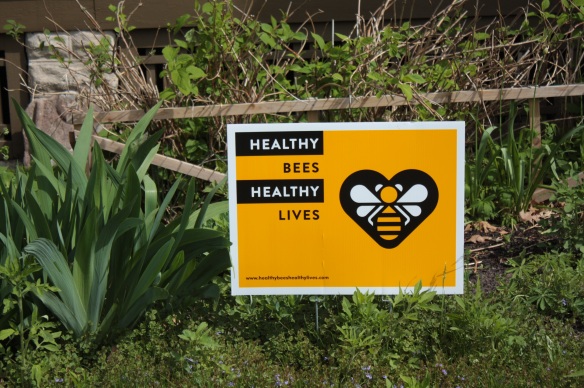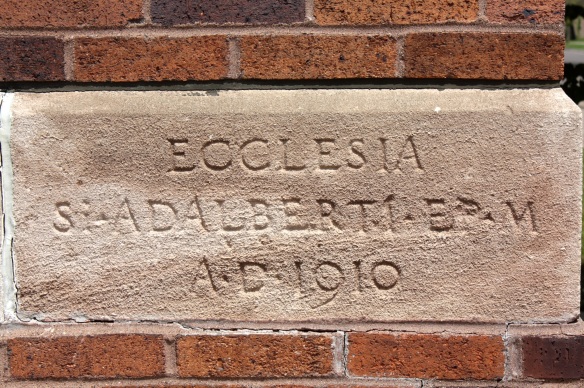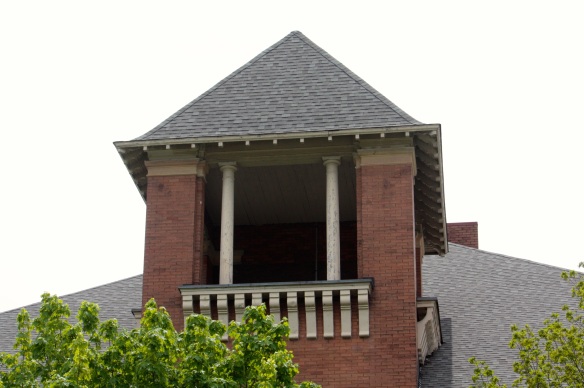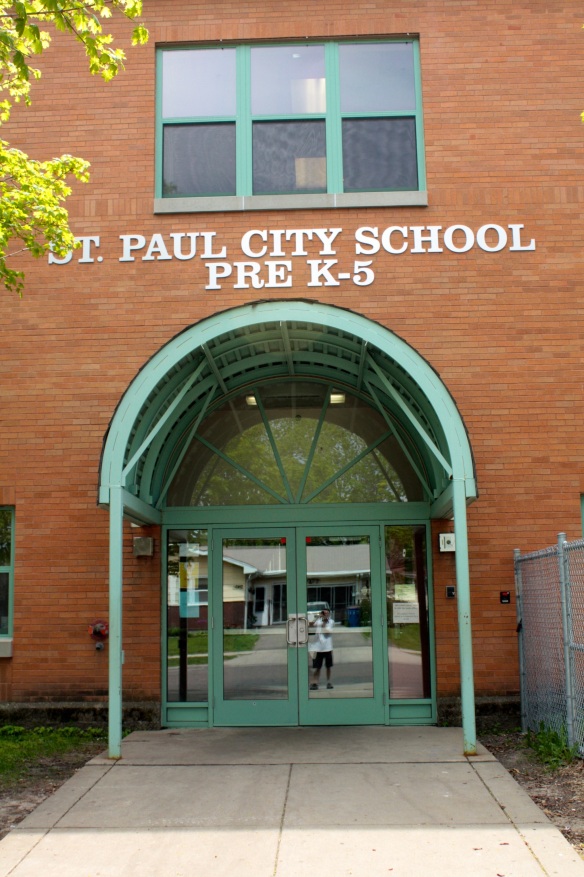May 24, 2014
17.9 miles
Macalester-Groveland, Lexington-Hamline, Frogtown, North End
Houses of worship flourish in Saint Paul. My rides have taken me past large, traditional church buildings with cross-topped spires, small storefront houses of worship with handwritten signs and nearly everything between. Today’s trip featured views of many of them. More on that later…
You’ve likely heard the cries of concern over the declining honey bee population. A couple of neighbors in the 2000 block of Lincoln are doing their part to help and based upon the signage, it’s been successful.
The creative paint job at Creative Lighting, 1728 Concordia Avenue.
Some old bikes sat in the back yard at 1460 Roblyn at Pascal. Many a baby boomer rode something like these.
Charles Avenue parallels University two blocks to the north. It recently became a designated “bike boulevard” which includes special signage.
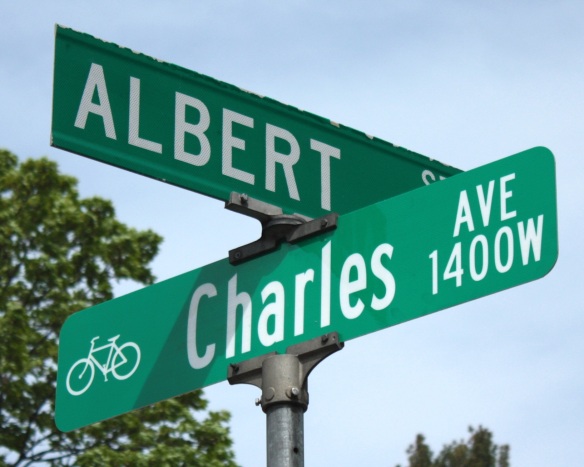
The Charles Avenue sign features a bike, a nod to its designation as a bike boulevard. Notice the upper and lower case letters on the Charles Avenue sign and the much more common all upper case on the Albert Street sign.

Galtier Elementary School at Charles and Hamline Avenue is named for one of Saint Paul’s early European settlers, Father Lucien Galtier, who came to the hamlet of Pig’s Eye in 1841. Father Galtier built a log chapel on a bluff above the Mississippi River in what today is downtown.

This plain building is home to Nehemiah’s Walls Baptist Church. It is one of several houses of worship I passed on the ride.
Allen Hicks was enjoying a break from some yard work when I pedaled past his house at 584 Charles. He told me, “I built that pond in my front yard about four years ago and then every year, I clean it out and put different water in it, so that’s what I’m doing today.”
Allen continued, “When I cleaned it out I found a few holes in the tarp. I’ll put some duck tape on those holes in the tarp. I’m sure it leaks but the duck tape will take care of that.”
Allen planned to fill the pond with water later in the day. Then, he told me, he’ll reinstall a fountain and add some fun with fake fish and a fake snake.
Allen, who’s lived at 584 Charles for 15 years and Erma, a 30 year resident there, enjoy the area, “My favorite part of the neighborhood is the quietness,“ surprising since only two blocks separate their home from the frenzy of University Avenue.
“We (neighbors) look out for each other a lot.”
Another block and another church.

The unusual design of the Church of St. Adalbert is marvelous. Originally a Polish Catholic church when it opened in 1910, it now primarily serves Vietnamese Catholic parishioners.
Immediately behind (to the north) of St. Adalbert is the church’s former elementary school, built in 1901. This lovingly cared for brick school-house is a rare remaining example, at least in Saint Paul, of school architecture at the turn of the last century. According to Saint Paul Historical, St. Adalbert School shut the doors in 1986 because of low enrollment–14 students attended the school the year it closed. The building reopened as The St. Paul City School, a pubic charter school, in fall 1998.

Where the old and new meet. The 1901 portion of the building is to the left of the corner and the more recent addition is to the right.
While the architect did a good job of making the new wing resemble the original, a closer look reveals extra ornamentation, like the brickwork above the window, on the old section.

The west side of St. Paul City School and playground. One of the towers of St. Adalbert is visible on the right.
This area of Frogtown developed early in Saint Paul’s history into a neighborhood of railroad workers and other laborers and their families. Their homes were nothing like the elaborate Victorian mansions Saint Paul that give Crocus Hill so much of its charm. Not only were the working-class homes much smaller, the exteriors by and large were constructed without dentils, fluting, transoms and other embellishments that were signatures of the homes of the wealthy. Despite their lack of flair, many of these older homes were well constructed and still look good 100 years or more after they were built.

The Minnesota Women’s Building, 550 Rice at Charles, dates back to 1889. In 1988, The Minnesota Women’s Consortium purchased the building, which had been an adult bookstore or, a ‘pornography shop,’ as the Consortium’s website calls it.
Many of the streets I traveled today, especially in Frogtown and the North End, are streets I’d never before set foot, bike or even car on before. One of the best parts of this project are meeting people with interesting stories and investigating parts of Saint Paul which I’ve not experienced before.
Below is the map of today’s full ride. The second half of this trek will be posted soon.

